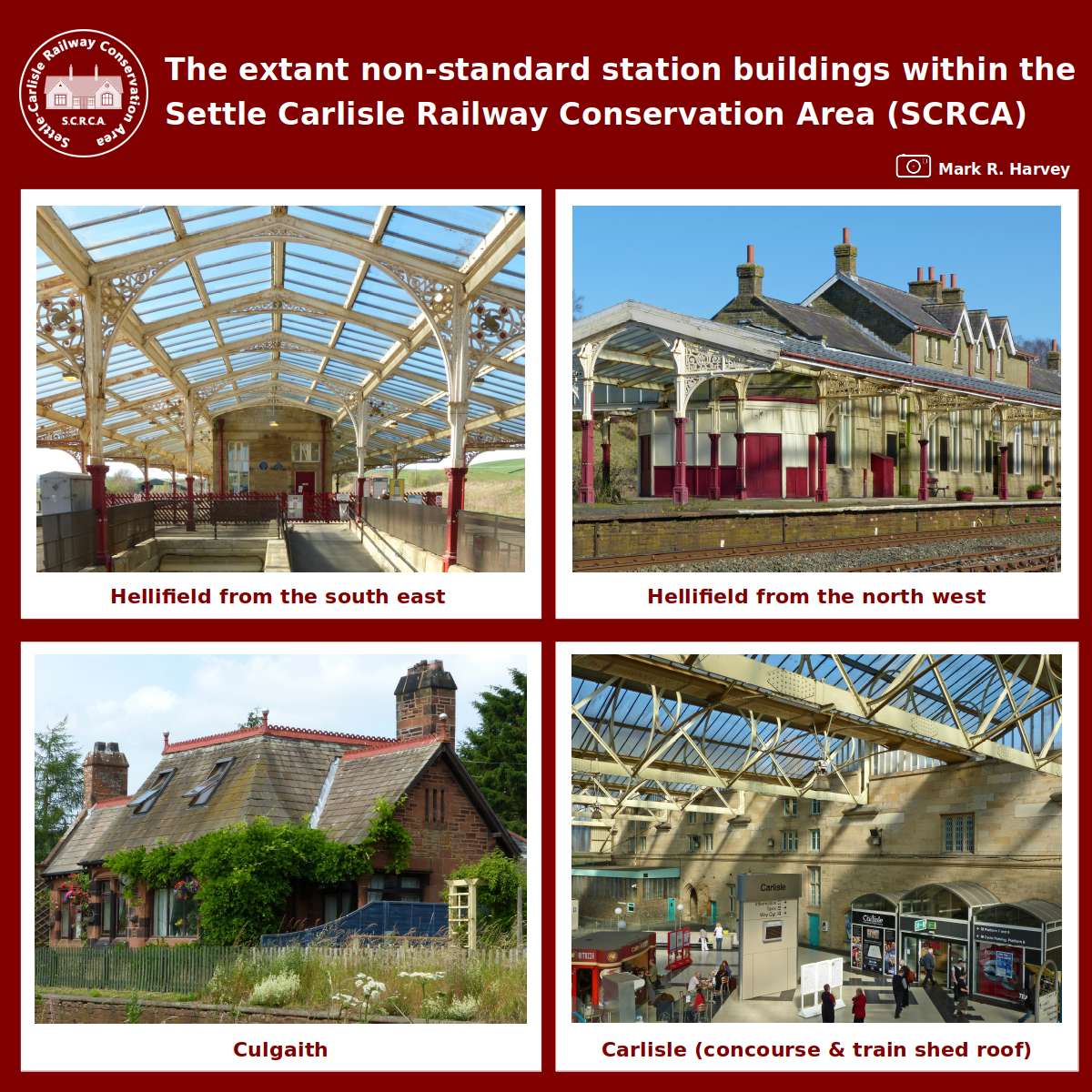A total of twenty-four main station buildings are located within (or are directly associated with) the Settle Carlisle Railway Conservation Area (SCRCA). Eighteen of these were constructed to one of the three Settle & Carlisle Railway standard designs. This article provides a brief introduction to the 'non-standard' six, namely Hellifeld (NWR), Hellifield (MR), Long Preston, Garsdale, Culgaith and Carlisle Citadel.
The main station buildings at Hellifeld (NWR) and Long Preston were constructed by the North Western Railway Company (NWR) as part of its scheme to create a route linking Skipton with Low Gill and Lancaster via the Lune Valley. They were built twenty years before the Midland Railway Company began construction work on the Settle & Carlisle Railway and they were demolished in 1966 (Hellifeld (NWR)) and the early 1970s (Long Preston). In both cases, their design was similar in general form to the main station building that still stands at Gargrave, although their exterior walls were constructed from timber frames clad externally with overlapping horizontal timber boards (rather than the timber frames with plaster infills used for Gargrave).
Image 1

The current station at Hellifield was built by the Midland Railway Company and it opened on June 1st, 1880. The large scale and grand design of the station's main building and associated canopy reflects in part the station's importance as a junction. However, the main justification for these expansive (and expensive) structures was passenger comfort: they enabled the passengers of long-distance express trains to disembark briefly to stretch their legs, obtain refreshments and use the station's toilet facilities. (Early railway carriages did not have corridors, restaurant / buffet cars or toilets for third class passengers.)
The station at Garsdale was located at the point where the Hawes Branch diverged from the main line and it formed an important part of the Midland Railway Company's Settle & Carlisle scheme. Constructing a booking office to one of the standard designs at this location would have been prohibitively expensive (due to the steeply sloping nature of the site and the need to purchase additional land). A non-standard booking office was therefore provided on the island platform, but its design was constrained by the narrow width of the platform and the need to provide a canopy to protect interchange passengers from the weather. The facilities provided in this building included a porters' room, an office for the Station Master, a booking hall, a ladies' waiting room and toilet facilities for both ladies & gentlemen. A separate waiting shelter was also constructed on the island platform. At some point circa 1957, the booking facilities were moved to the adjacent waiting shelter and the original main station building was demolished.
The original plans for the Settle & Carlisle Railway did not include a station for Culgaith. In 1875, the Midland Railway Company yielded to local pressure and agreed to provide an additional station on condition that the local council constructed a new road linking the station with the village. The council agreed but, before the road was ready for use, the original railway construction contractors had moved-on to other projects. As a consequence, a completely separate contract had to be drawn-up for the station structures and, perhaps to minimise cost, the Midland Railway Company did not insist on the adoption of the standard designs.
The main station building at Carlisle Citadel was constructed between 1846 & 1851 and its design reflects the aspirations and architectural styles of the two companies that commissioned it (the Lancaster & Carlisle Railway and the Caledonian Railway). When the Midland Railway Company began to operate passenger services along the Settle & Carlisle route in 1876, it became the seventh company to use the station at Carlisle. The track layouts, platform arrangements and ancillary buildings have been altered several times since 1851 to reflect changes in traffic levels, but the main station building has remained relatively unchanged. The impressive train shed roof was added in 1880-1881, but over the decades it suffered from a combination of neglect, bomb damage during the Second World War, unsympathetic modifications and partial demolition. However, it was sympathetically repaired in 2015-2017 and the section adjacent to the main station building retains much of the character of the original.
Acknowledgements
Text and photographs by Mark R. Harvey (© Mark R. Harvey, 2022).
